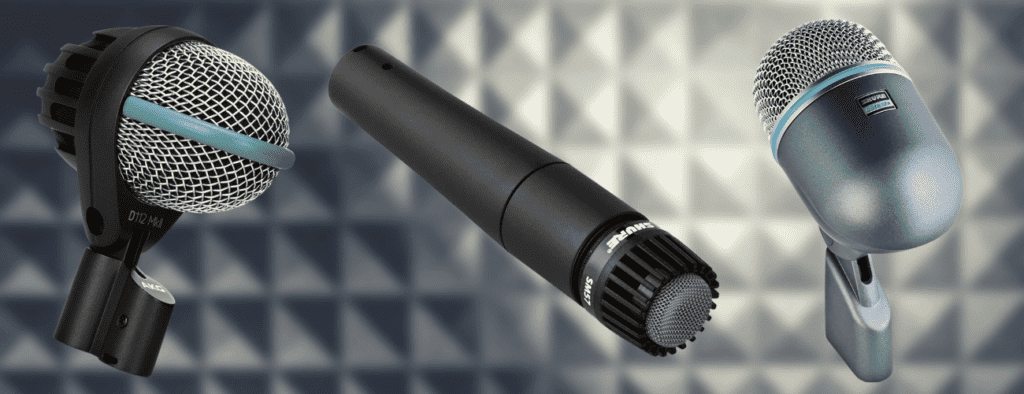The bottom end, and especially the bass track, can make or break any song. Recording a bass guitar is not too complicated, but some techniques can help you get the bass tone you’re after. So, today we’ll learn how to record a bass guitar and make it sound amazing.

Table of Contents
Methods of Recording Bass Guitars
A tooth-loosening, earth-shattering bass sound is attainable at the home studio level through any combination of two highly effective recording methods:
- Miking the bass amp with a quality signal chain
- Using a direct injection box (DI Box) to go straight to the board/input
Or, of course, you can do both.
How To Record A Bass Guitar Through Miking The Amp
If you’d like to mic up the bass amp to get that certain bass sound, you could use a large diaphragm cardioid mic. Some examples are AKG D112 or Shure Beta52 positioned in front of the cone. You could also couple these with a dynamic cardioid like a Shure SM57. This will help get a bass sound that offers more control during mixdown.
Just be sure that both mics are in phase. Out-of-phase mics will get a distinct hollow sound that will ruin the thick, meaty sound you’re supposed to get. Unless, of course, that’s what you’re aiming for that effect).

How To Record A Bass Through A DI Box
A simpler setup would be to connect your bass guitar to the input of a direct injection box. This offers a different, rounder character compared to the crisp sound you get from miking up a bass amplifier. There are many active and passive DI boxes to choose from. Do your homework, and try them out at the local guitar shop to see which appeals to you the most.
Small tip: If your bass is active, go for a passive DI box, and vice versa.
After you choose the DI box of your liking, connect your bass to your DI box, and the DI box to your sound card / audio interface. Easy, right?
Now you have a clean bass recording, which you can edit with your favorite VST (here’s a free one)
Mixing Both Methods
You could also opt to pursue both methods. Setting up a direct injection box to send the bass signal directly to your recorder/sound card. Then, use its parallel/link output to send the same signal out to the bass amplifier, which features one or two mics of your choosing. This will enable you to craft a unique bass sound during mixdown by offering you at least two different bass sounds to manipulate from the same take.
How to Get a Good Bass Sound in a Recording?
The tone of a bass guitar is affected by five things:
Technique
I know you’ve heard it everywhere, to the point that it has become a cliche: the tone is in your fingers. The most important ingredient to getting a good bass sound is the player’s technique. No matter how advanced, expensive, or high-tech your bass rig is. If the player you’re trying to record has substandard technique, you should expect to get a substandard sound.
The Bass Guitar Itself
The next link in the chain would be the choice of bass guitar. A $10 flea market-bought bass would sound radically different from a $1000 Warwick. So choose which one suits the music wisely.
Type of Strings
The choice of strings (roundwound, flatwound, etc) also influences the resulting sound and character of the bass, as well as its behavior in interacting with the bassist’s fingers.
Choice of Effects
You can consider the effects as post-recording, but it’s very common to record a bass guitar with the effects, too.
The amount of compression, distortion (or overdrive), and many other types of effects have a huge impact on your final tone. Take the time to figure them out properly and set them up, so they complement each other and the bass.
If you’re a bit low on pedals, you can always apply them on the recording itself with a VST. If you want to start building your rig, here’s a low-cost range of effects you should look into.
Finishing Thoughts
Today we learned how to record a bass guitar by miking the amp and by connecting it directly to the interface with a DI box. You should now know how to do both, and you can start experimenting with different techniques to achieve interesting sounds. Good luck!
If you liked this article, check out other posts in the recording and mixing section.